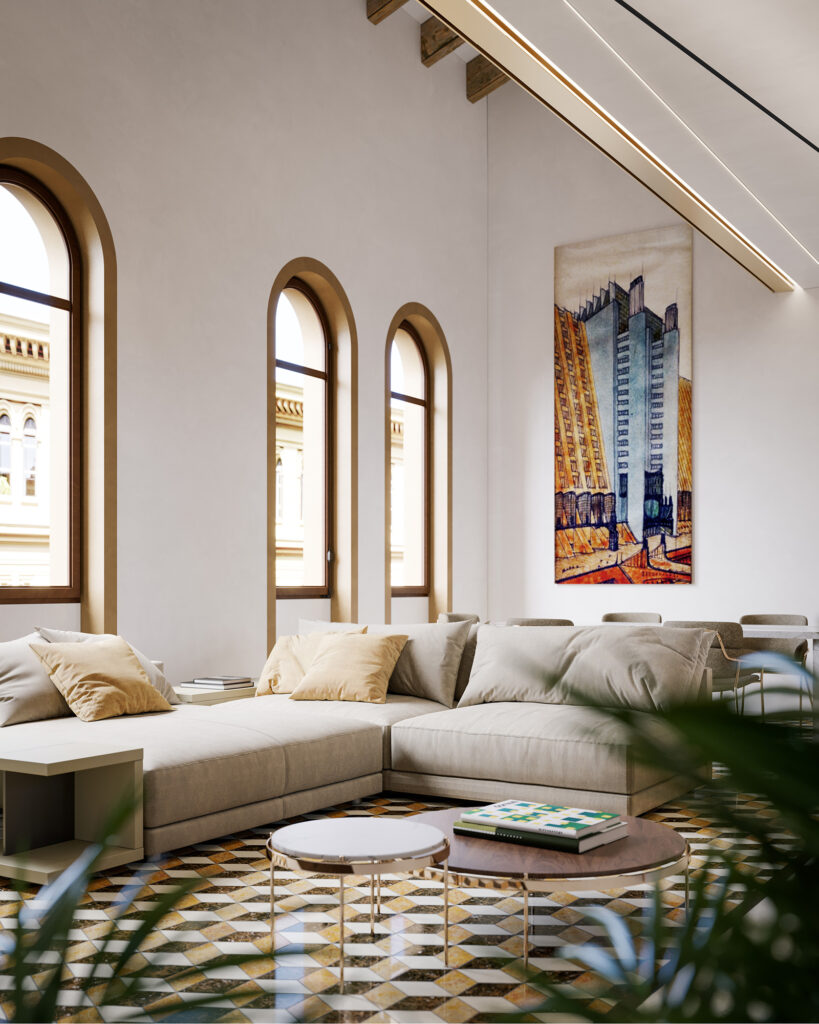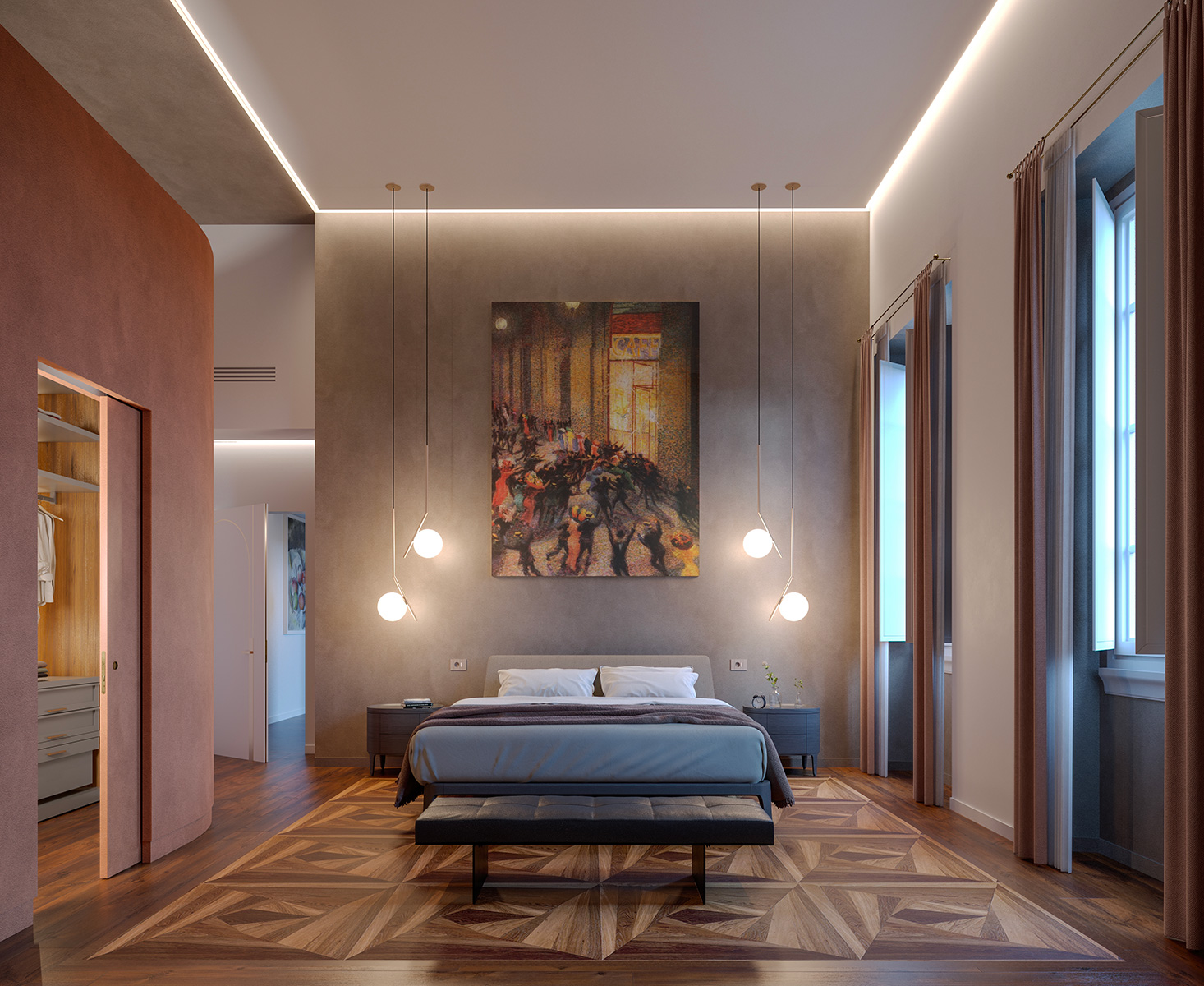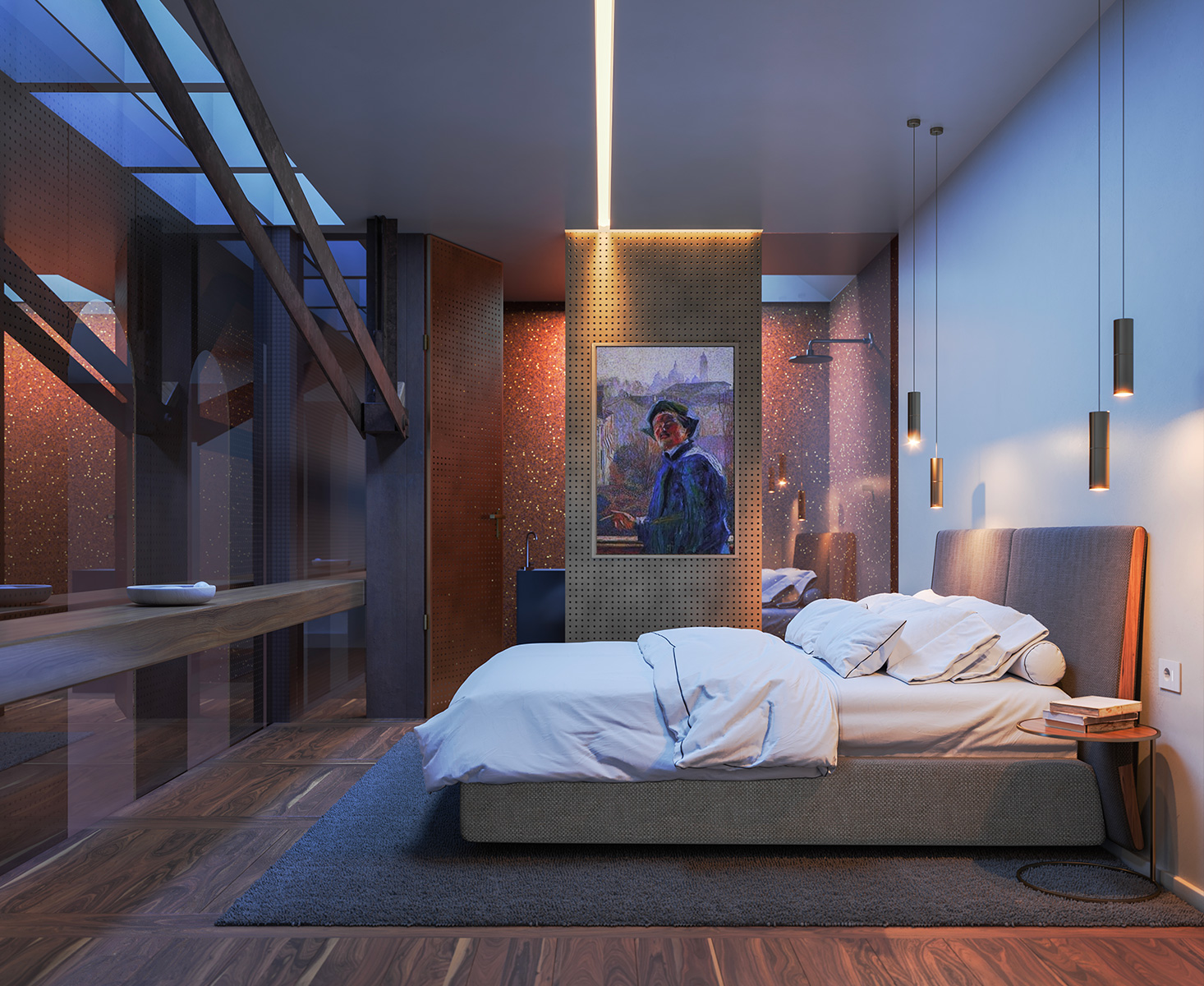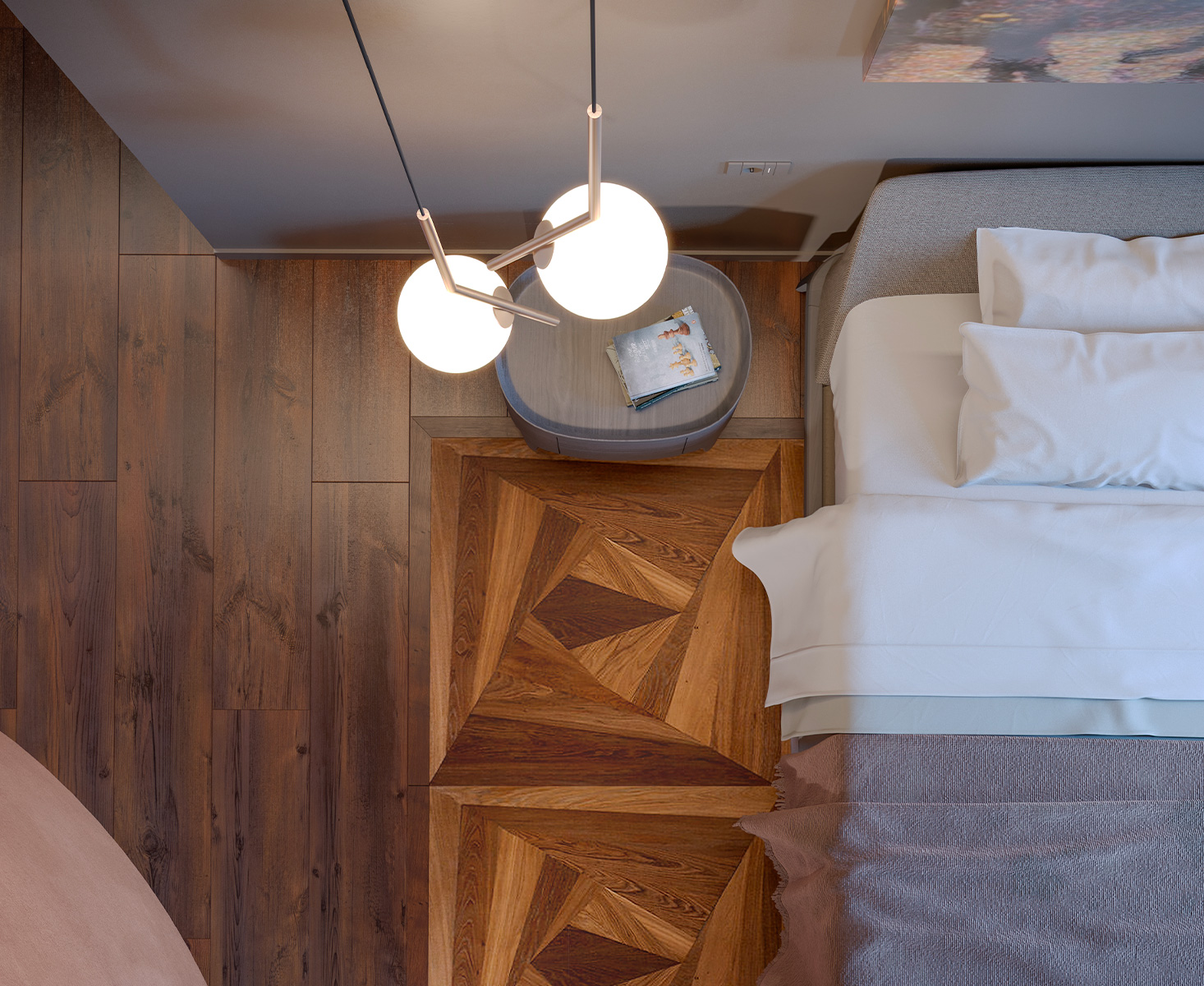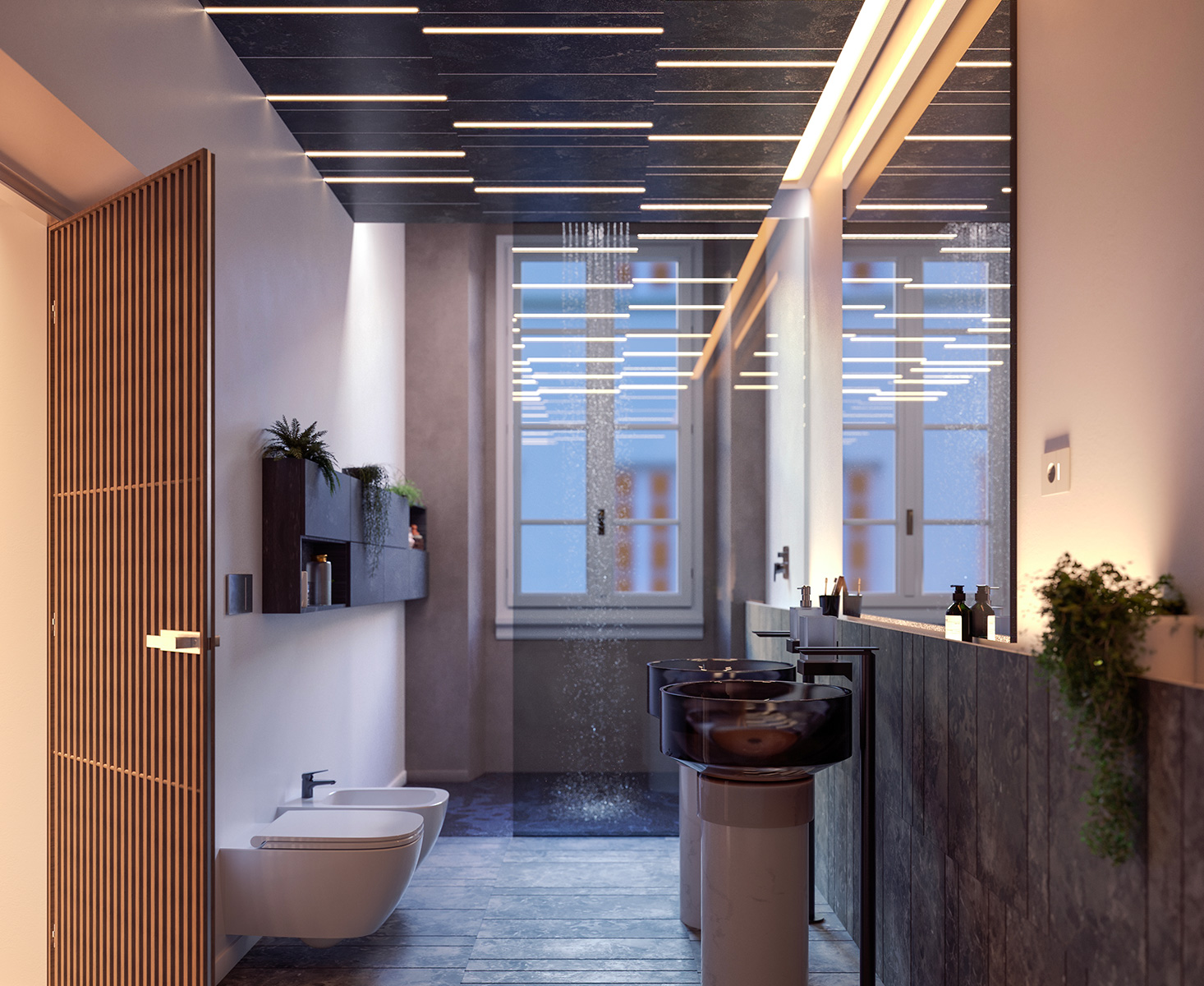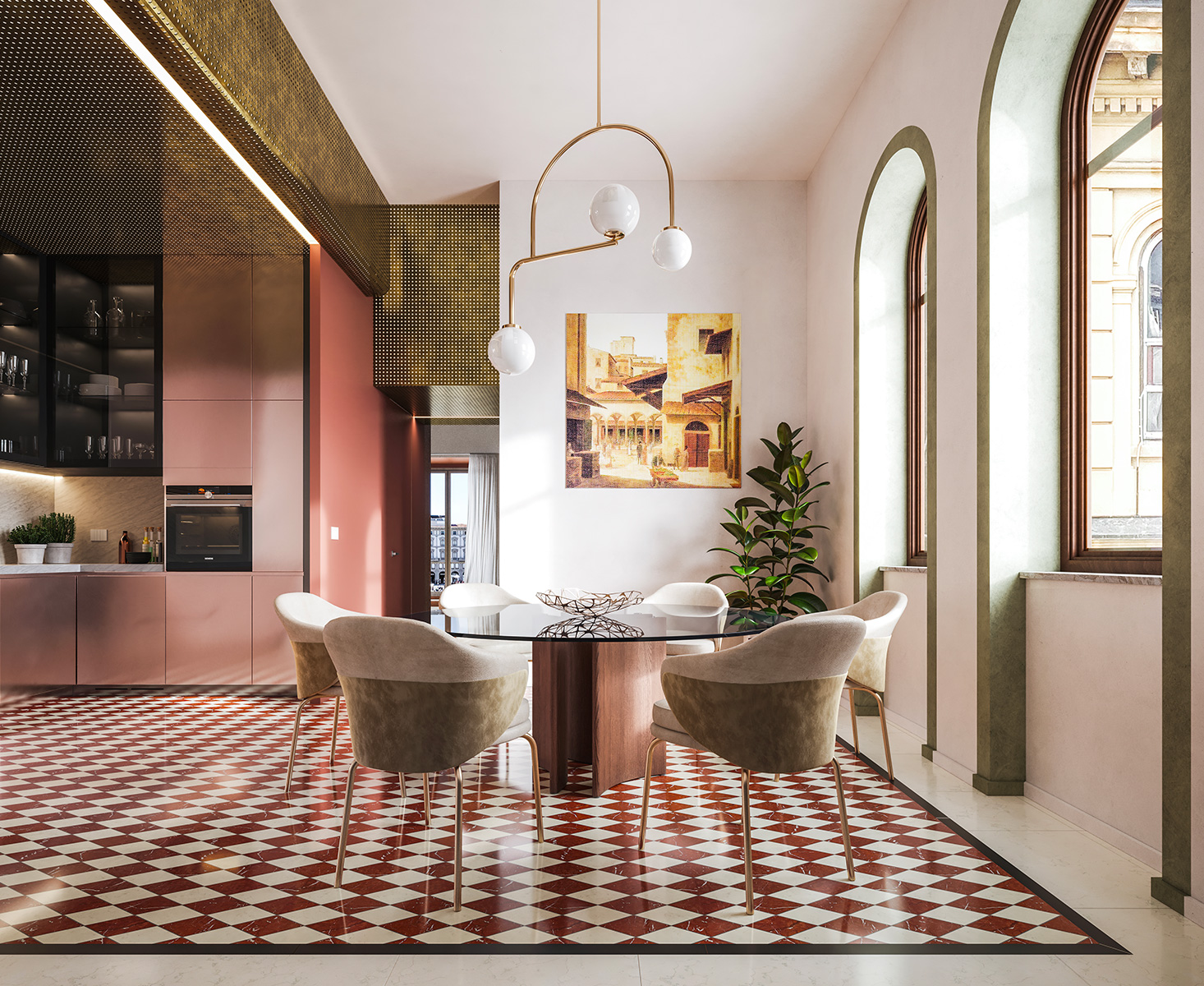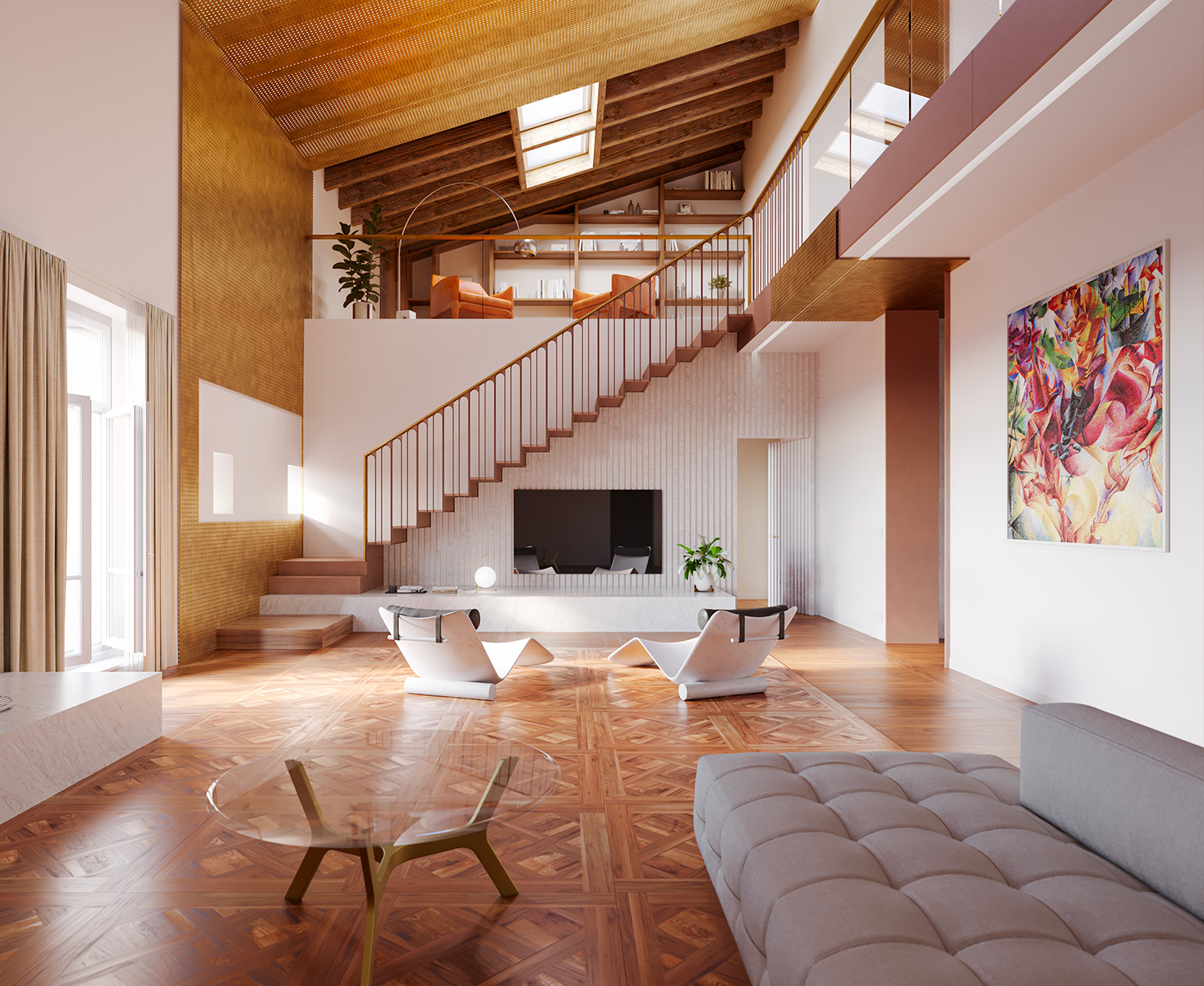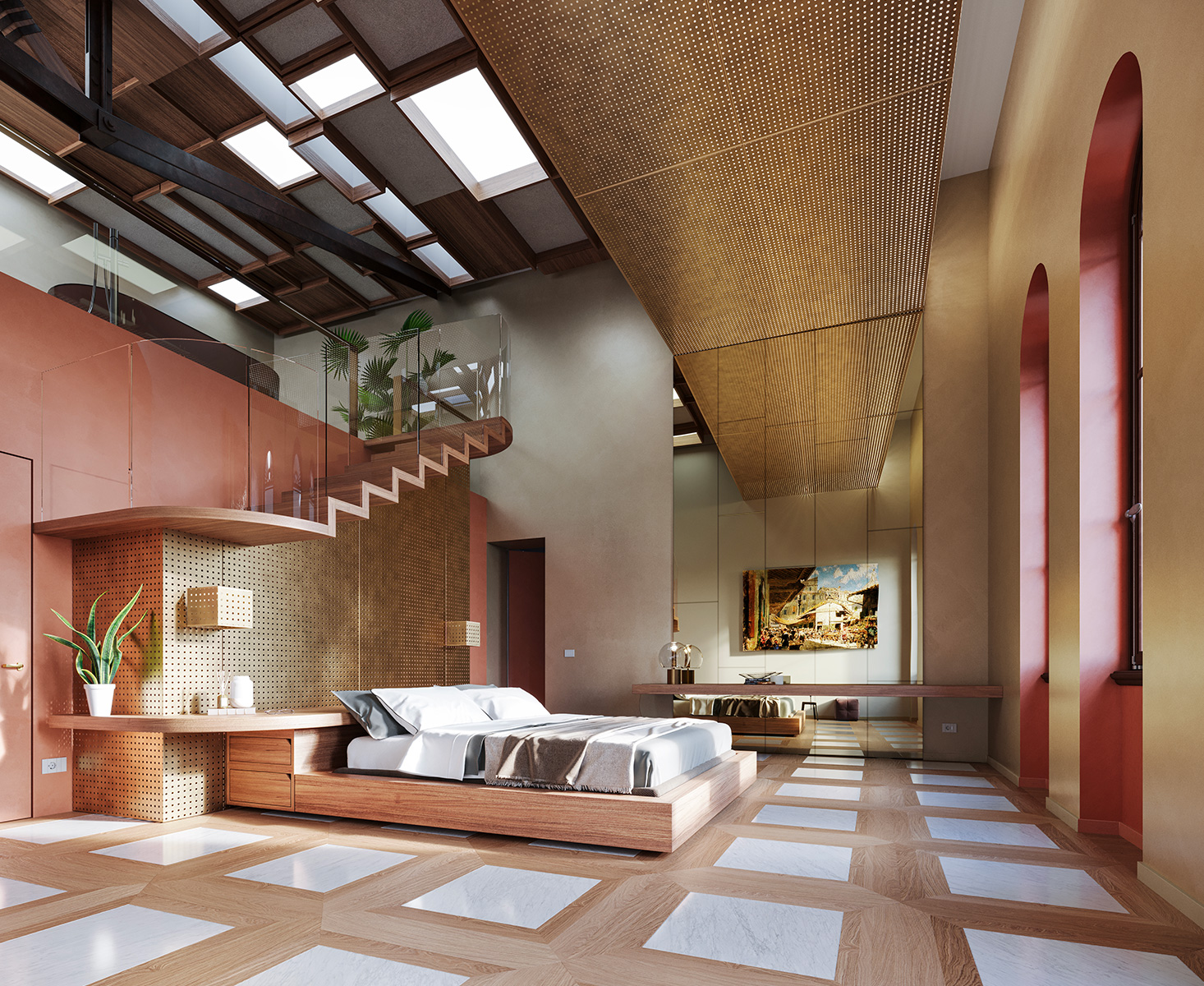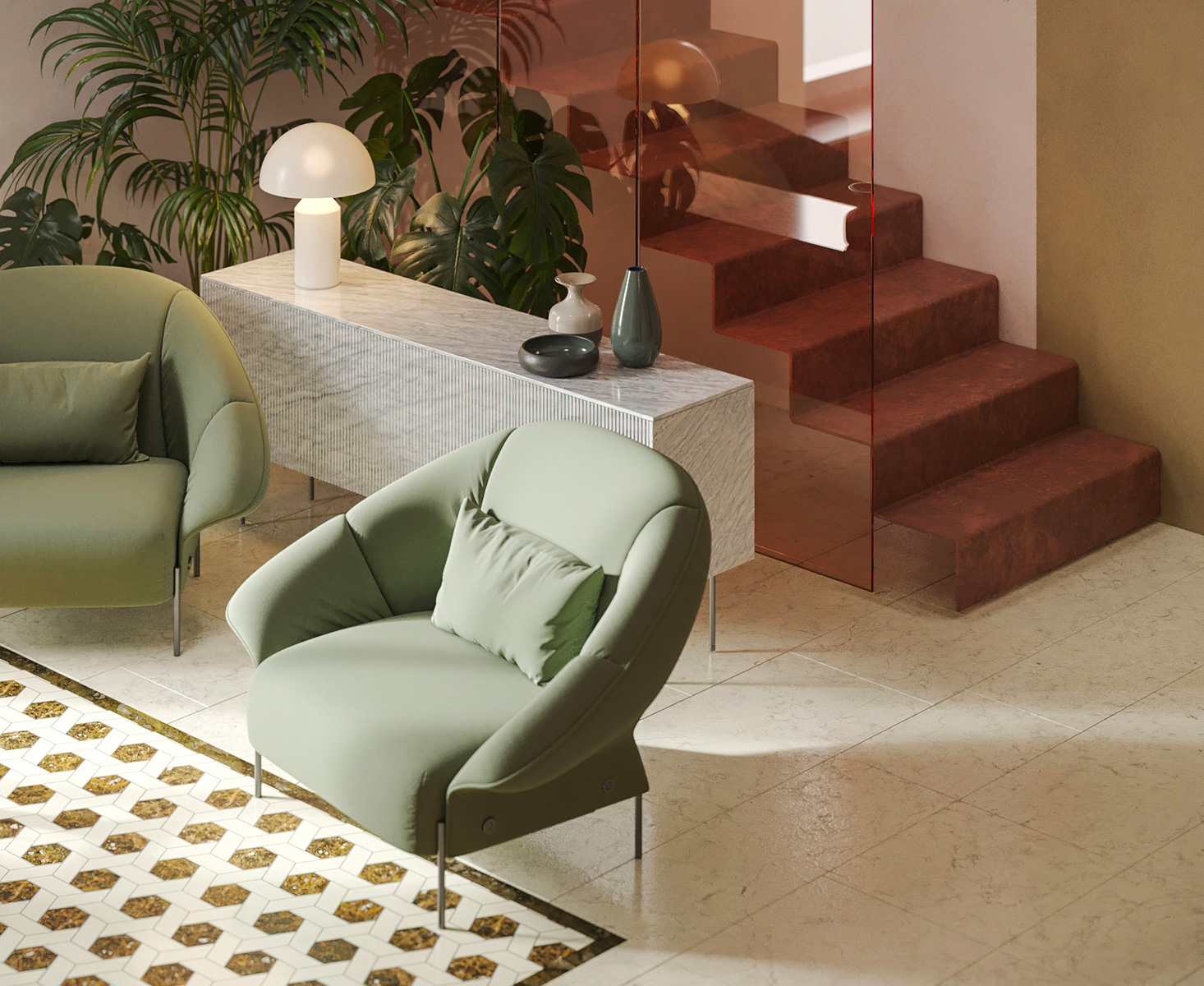INSPIRATION
“Piazza della Repubblica is not only highly significant in terms of architecture and town planning […] it is also historically significant, having been a centre for cultural renewal in Florence, thanks to the exciting conversations conducted around the tables of its famous cafés.”
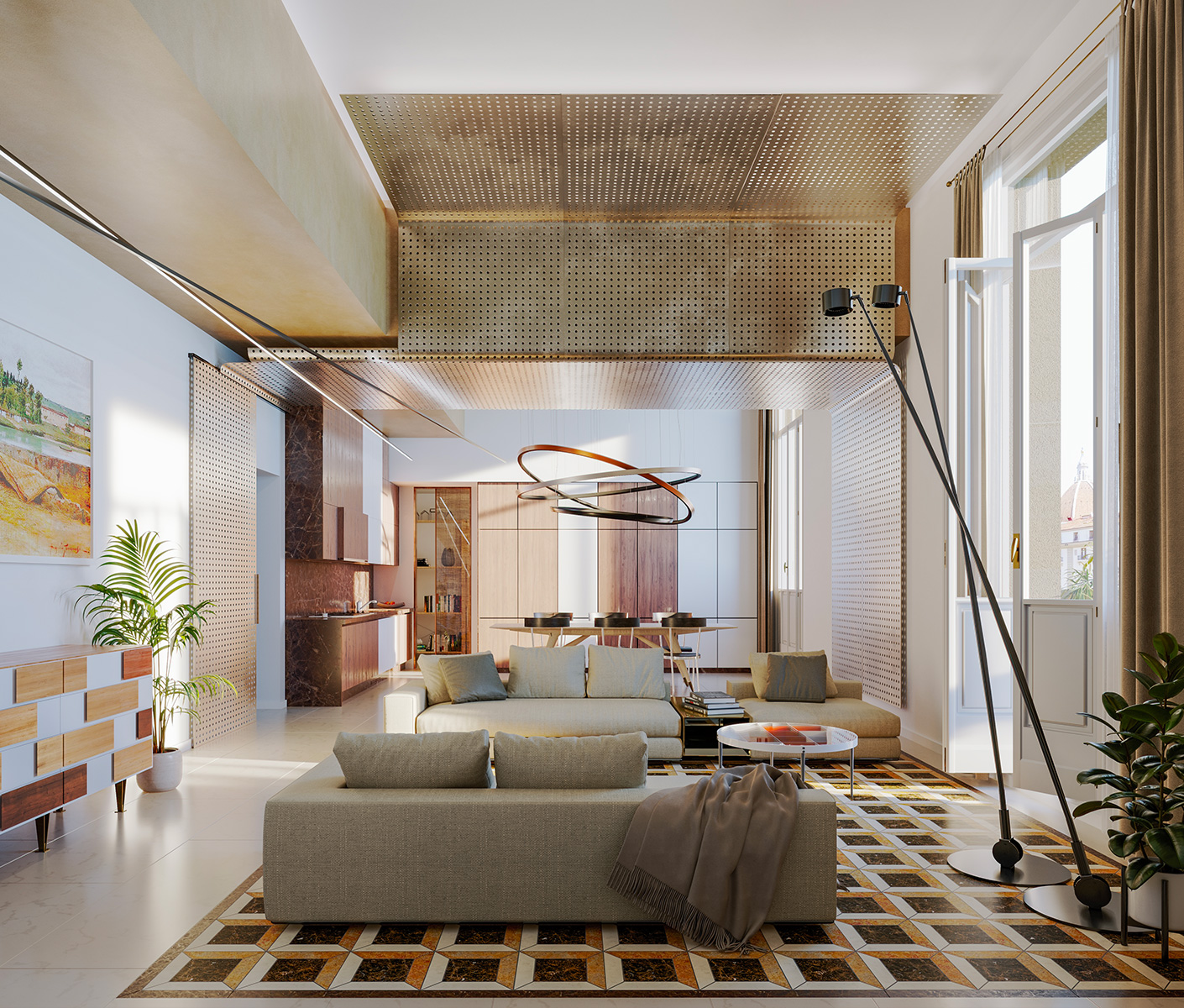
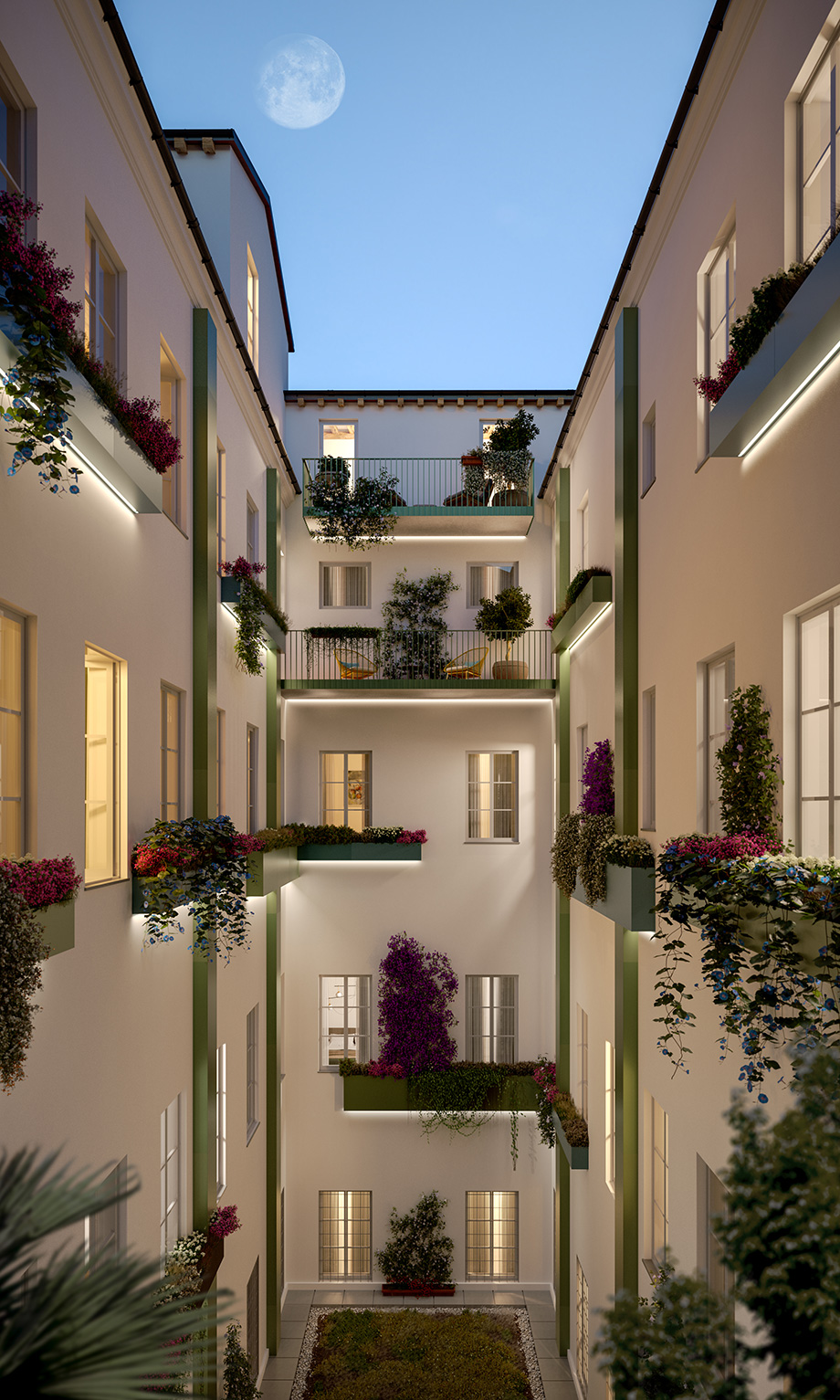
This is the reason why, in 1994, the Italian Ministry for Cultural Heritage listed Piazza della Repubblica among cultural assets worthy of protection within the old town, as part of UNESCO’s World Heritage.
History has provided the underlying inspiration for the project. The development through the centuries of this part of the city centre and the outstanding personalities enlivening it paved the way for the renovation project of Palazzo dell’Arcone.
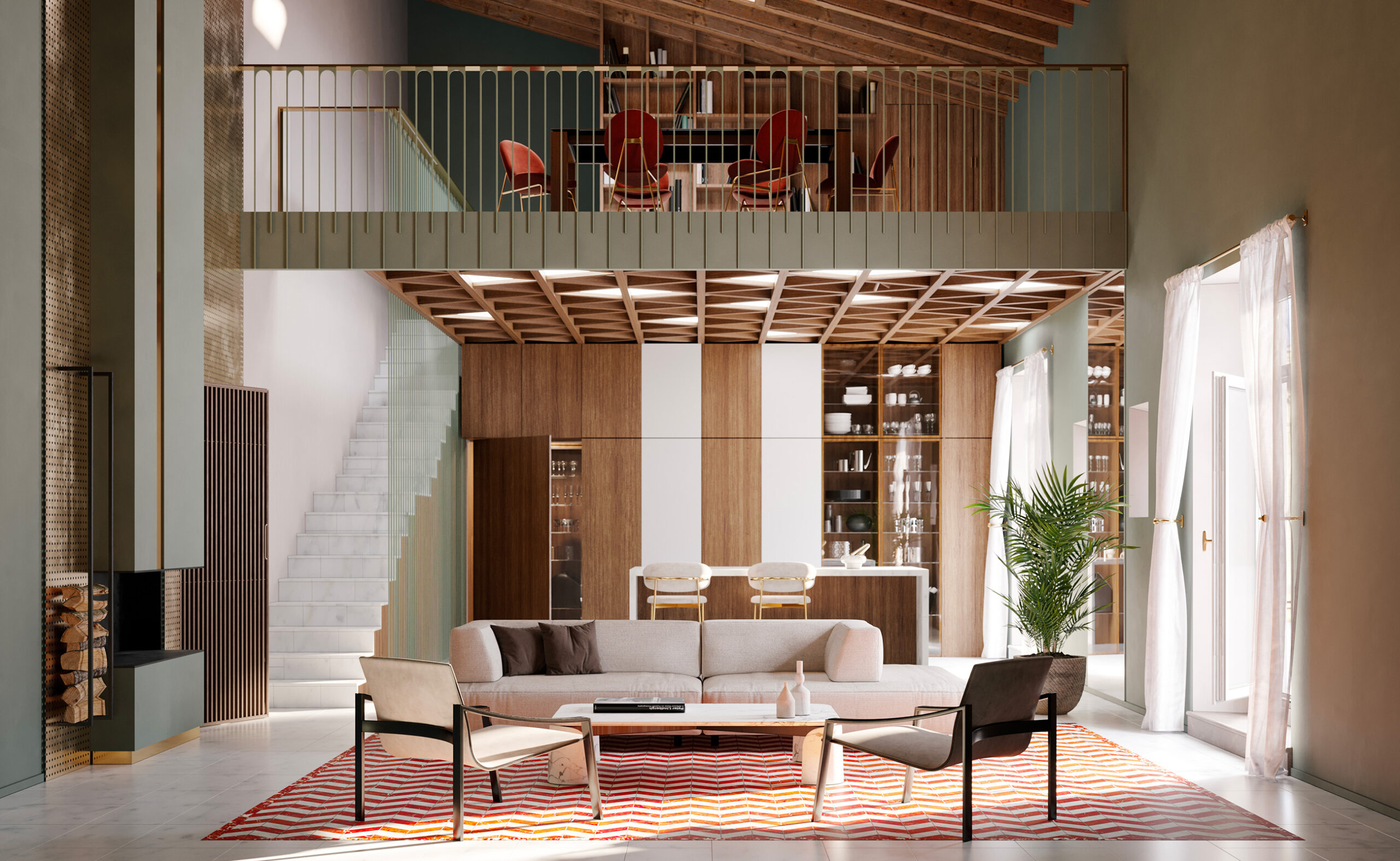
classic inspirations, daily emotions
The study of the last representatives of Romantic painting in Florence in the nineteenth century, first and foremost Telemaco Signorini, who painted views of Mercato Antico on several occasions, then moving on to the first innovators, such as Ottone Rosai, and to the new Futurist style in Florence and elsewhere, represented by artists such as Baccio Maria Bacci, Primo Conti, Carrà and Boccioni, has inspired a palette of colours ranging from the warm tones of okra and orange to petrol greens and cerulean blues.
These colours are matched by a sober but lively pattern of architectural elements: railings, stairs, ceilings and panelling look like a recollection of masters from the Italian Rationalist and Art Decò period, most notably Giò Ponti who worked in Tuscany as artistic director for the Richard Ginori factory.
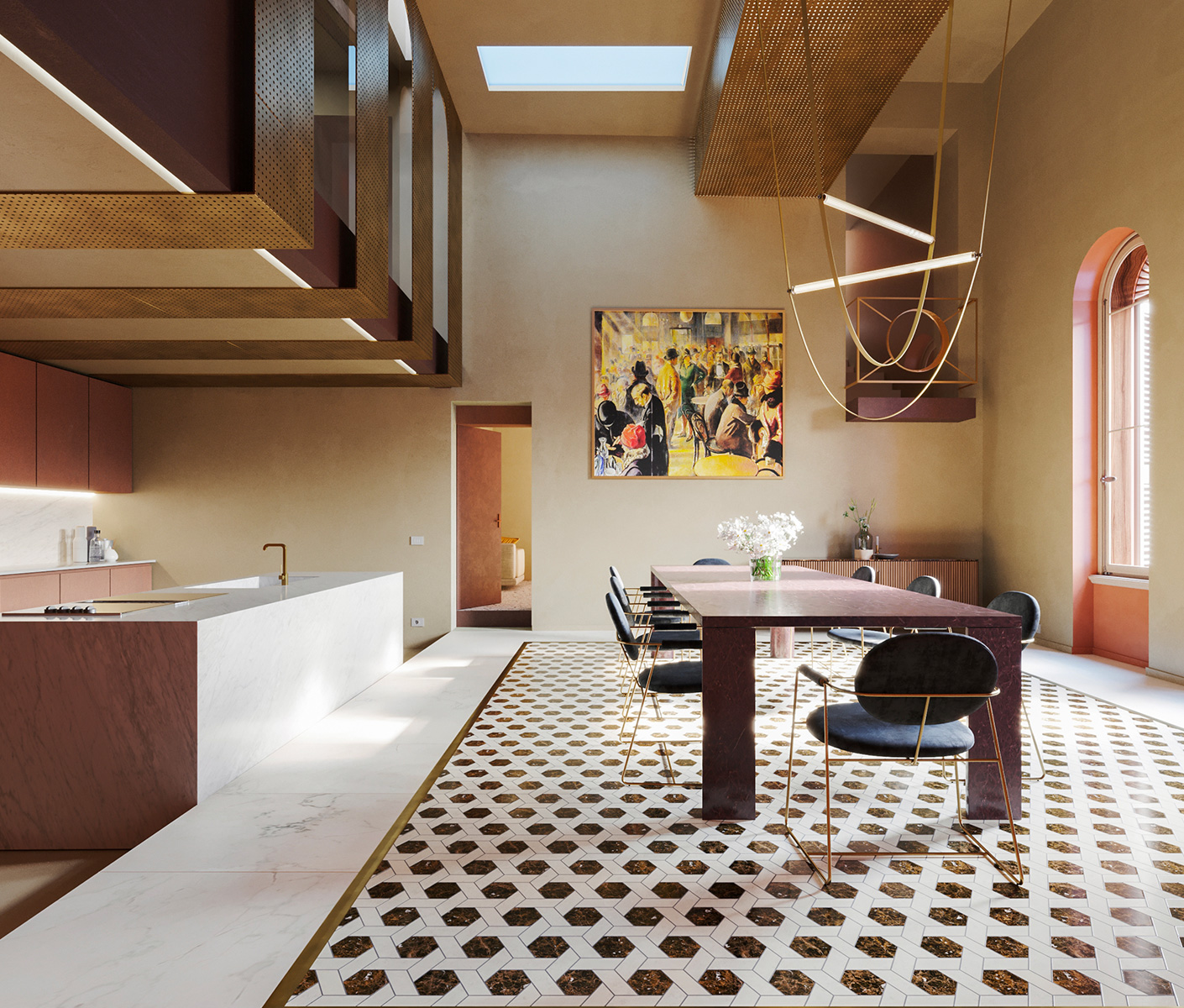
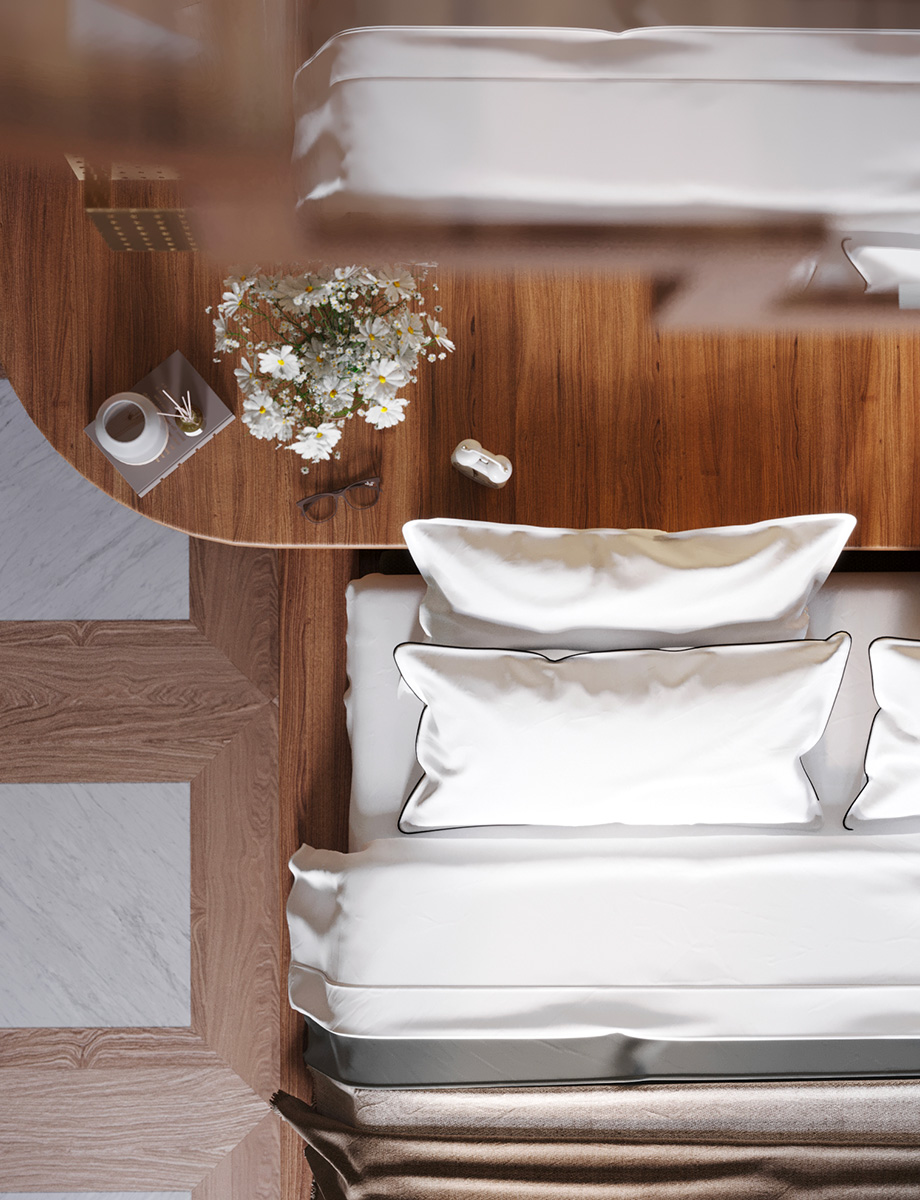
revived nobility
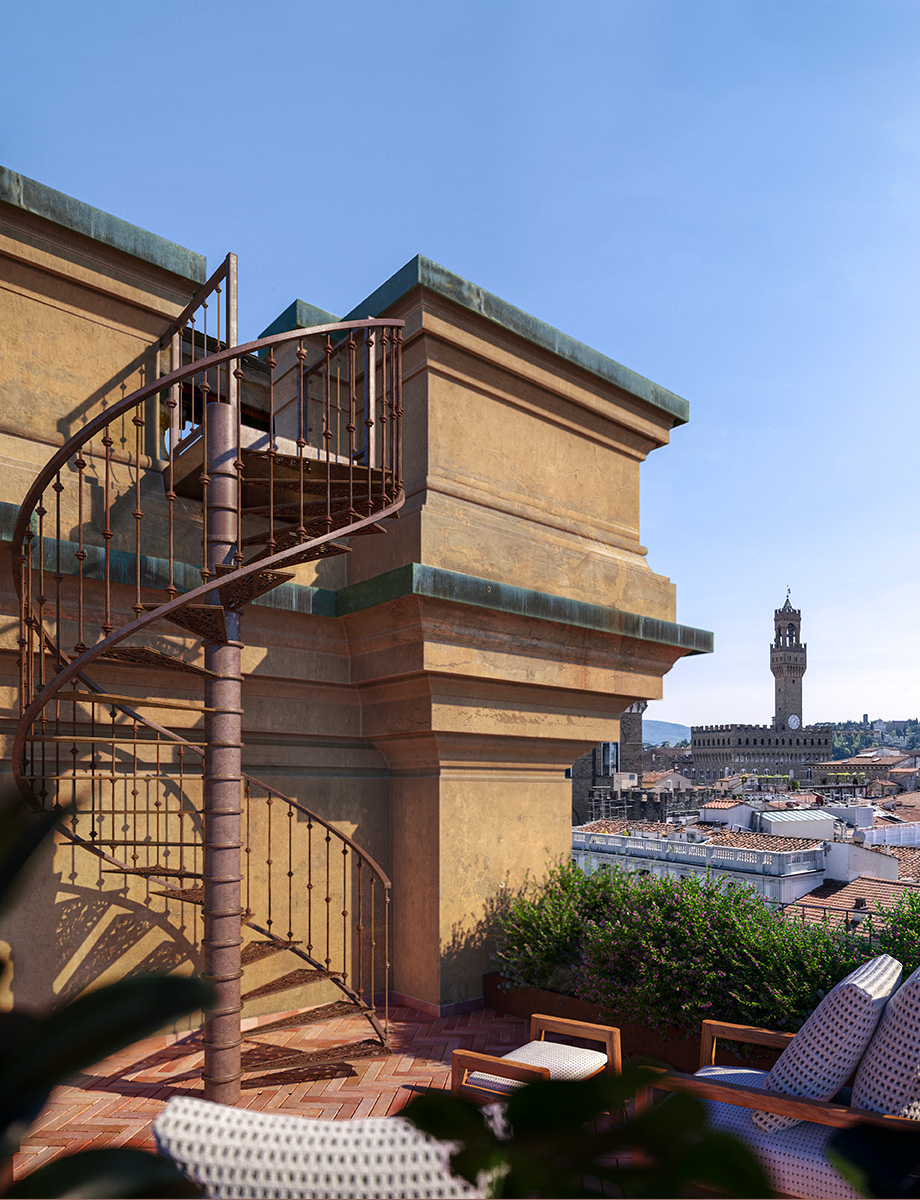
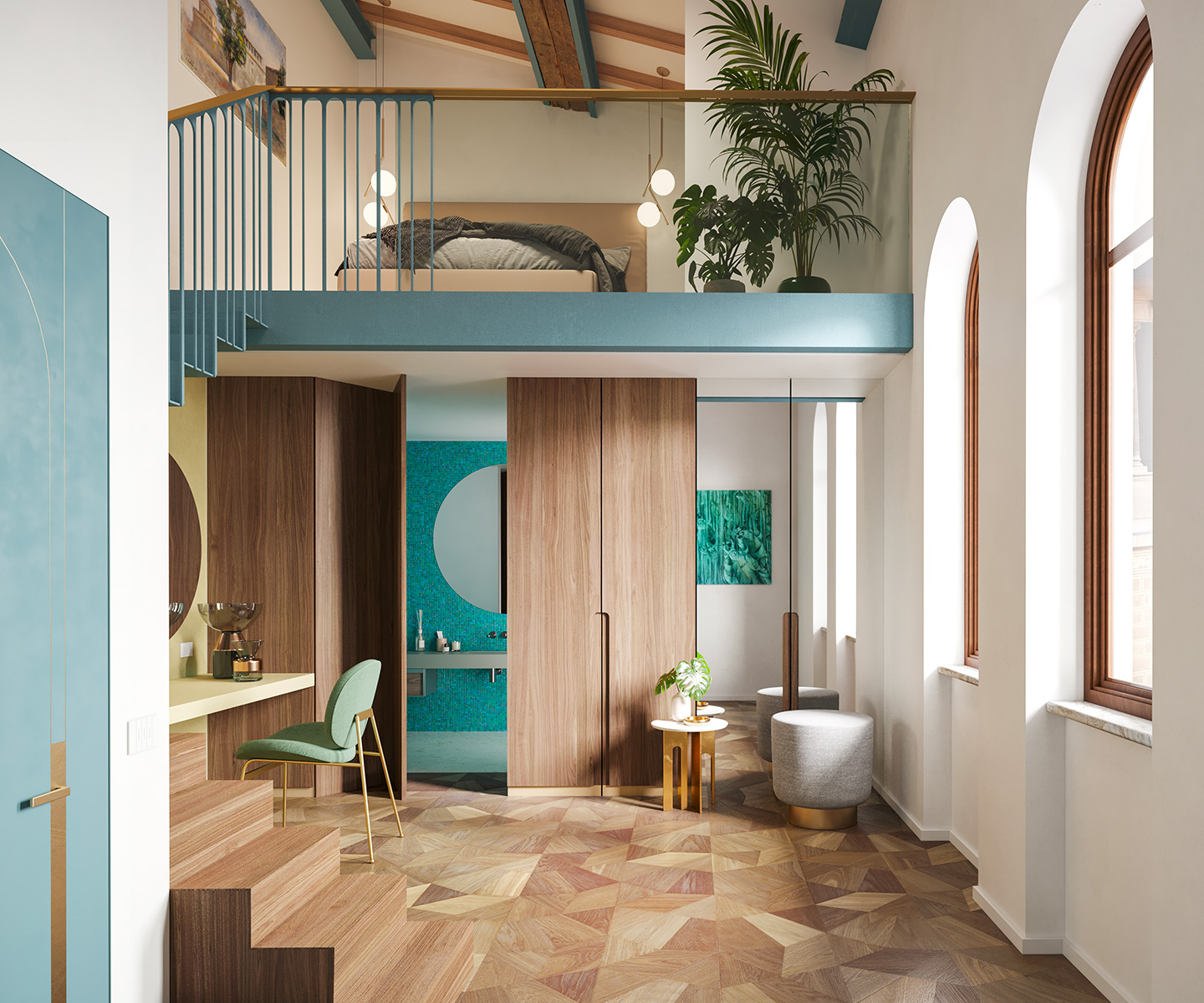
For the exteriors, the plan includes a recovery of the lost original two-tone painting, which was typical of the noblest Florentine buildings, as witnessed by photos dating to the early twentieth century, with architectural scores, mouldings in Fiesole strong stone, reflections and white trompe l’oeil reminding us of Brunelleschi’s art.
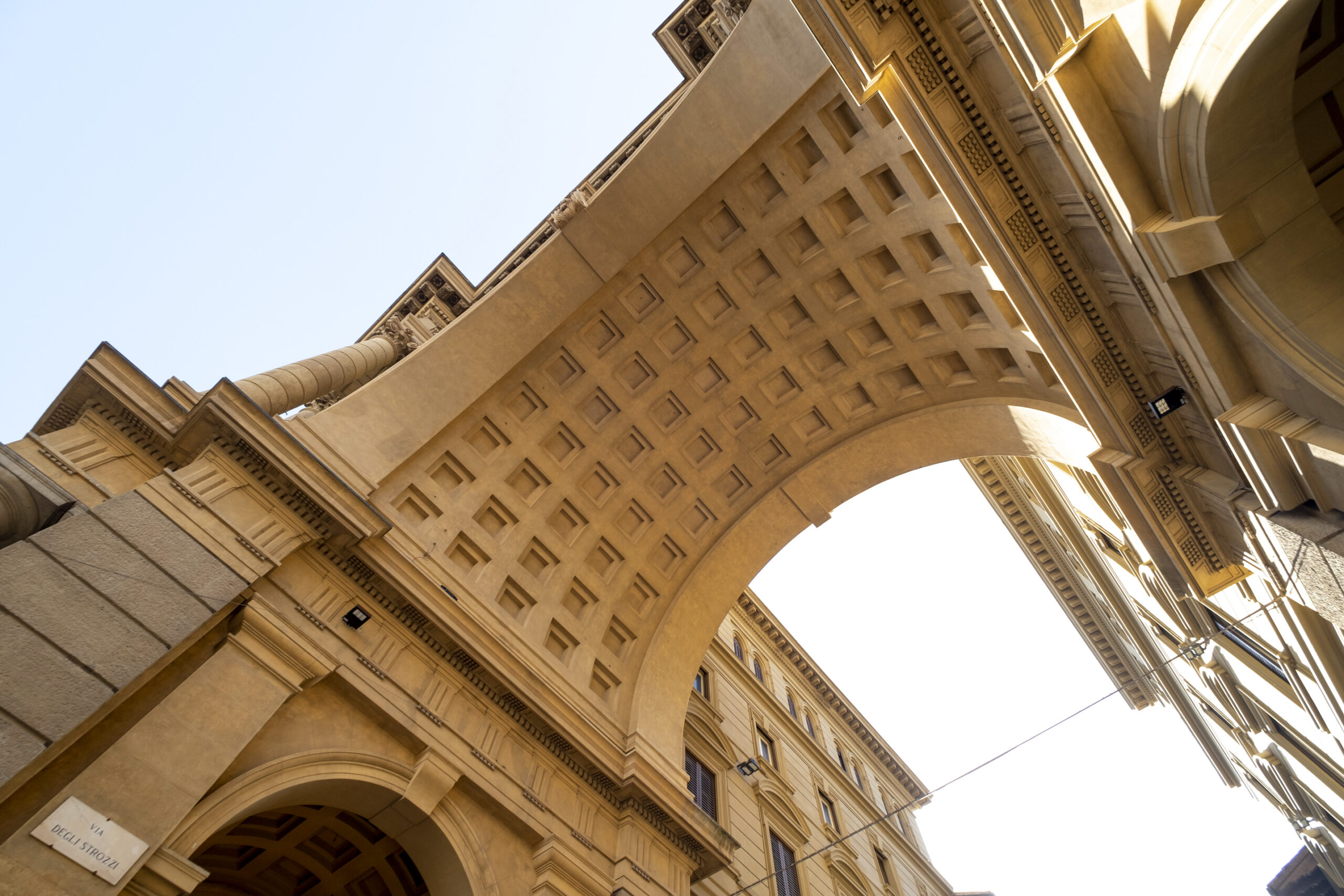
volumes, colours and materials
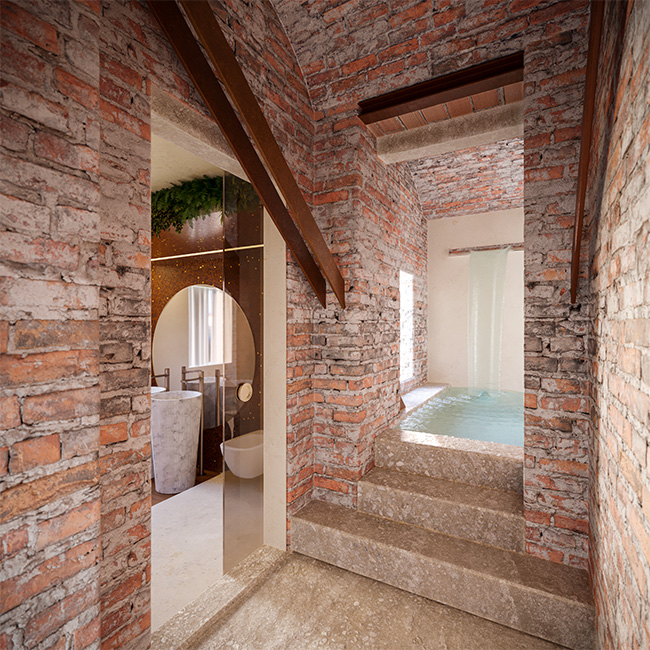
For the interiors, its language restyles, with remarkable respect, the best elements of early twentieth-century Rationalism and Art Decò design, searching for a human-scale architecture, for a home “with the beauty of crystal, but pierced like a cave full of stalactites, a home which is lively, versatile, quiet, continuously adjusting to the versatility in our life.”
